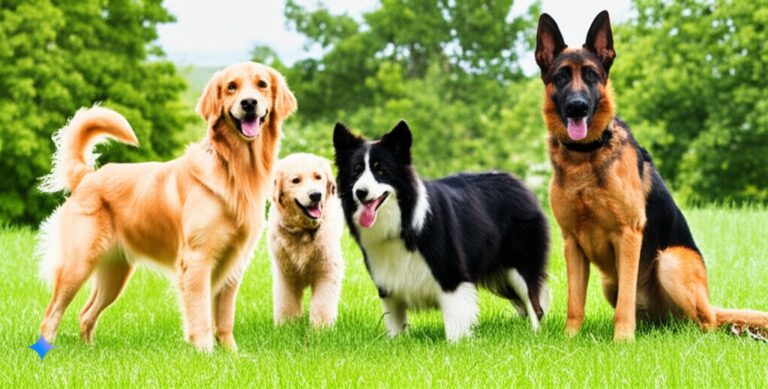
Welcome, fellow dog lovers! If you’re currently navigating the sometimes-challenging world of dog potty training, you’re in the right place. This journey, while occasionally messy, is incredibly rewarding and filled with moments of deep connection with your canine companion. I’ve spent years working with dogs of all breeds, ages, and temperaments, and I can tell you, dog potty training is achievable for every dog with the right approach. This article will walk you through everything you need to know, from understanding the "why" to implementing a successful training plan.
Understanding the “Why” Behind Dog Accident
One of the most crucial steps with dog potty training is comprehension. Your dog isn’t "bad" or "stubborn." Accidents happen for understandable reasons. Think of it like this: your dog doesn’t understand your rules unless you teach them.
Comprehension is essential, the dog may have accidents from
-
Age: Puppies, with their underdeveloped bladders and systems, will need frequent potty breaks.
-
Breed: Certain breeds, based on their size or energy level, require more frequent potty breaks.
-
Diet and Hydration: An increase in water intake leads to an increase in needing to "go."
-
Medical Conditions: Accidents can arise from underlying medical issues like urinary tract infections or other conditions. If you observe a sudden change in your dog’s potty habits, a vet visit is crucial.
-
Stress and Anxiety: Just humans, dogs can experience stress that leads to physical changes. A change in routine, a new family member, or loud noises can sometimes lead to accidents.
- Inconsistent Training: Inconsistency causes confusion. If you have varying rules, or allow some accidents, you may send mixed messages.
Think of it like this, if you were learning a new language, you’d need clear instructions to excel.
- Establish a Consistent Routine: Set regular potty breaks, making the dog go outside first thing in the morning, after meals, after naps, and before bed.
- Use Positive Reinforcement: Reward successful potty breaks with praise, treats, and enthusiastic affection.
- Crate Training (Positive) is Key: Crates provide your dog with a den-like feel and help them learn to reserve.
- Clean Thoroughly: Use an enzymatic cleaner to remove the smell of prior accidents fully.
- Be Patient: Training takes time. Celebrate the successes and don’t get discouraged by occasional setbacks.
The Essential Tools for Successful Dog Potty Training
Before diving into the training itself, you’ll want to set yourself up for victory with the right gear. Having the correct tools makes all the difference. Here’s a list of essentials:
- Crate: A correctly sized crate offers a secure and comfortable den.
- Leash and Collar/Harness: Essential for outdoor potty breaks.
- High-Value Treats: Small, tasty treats that your dog loves. These are reserved specifically for potty training and successful behavior.
- Potty Spot Marker: This can be a specific spot outside where you always take the dog.
- Enzymatic Cleaner: Crucial for removing the odor and preventing repeat accidents.
- Potty Pads (for Puppies): Useful during the initial house-training, but you will want to transition as it’s time to go outside.
- Clicker (optional): Can be a useful tool to mark the desired behavior.
- Patience: A large dose of patience!
- Positive Attitude: Your dog will sense your frustration. Staying calm and optimistic is important.
- Warm Clothes: Because the less frustrated you are, the more effective you can be.
Remember, successful potty training focuses on your dog’s positive behavior.
Decoding Dog Potty Training Schedules and Routines
Consistency is the cornerstone of successful dog potty training. Designing an effective schedule means aligning your routine with your dog’s needs.
- For Young Puppies:
- Frequency: Take your puppy out every 2-3 hours, especially after waking up, after meals, after playing.
- Nighttime Breaks: Expect needing to wake up at night. The frequency of nighttime trips will diminish as your pup matures.
-
Adult Dogs:
- Frequency: Most adult canines can "hold" their bladder for approximately 6–8 hours, but consider walk and potty habits.
- Routine: Establish regular walking and potty times. Early morning, after work, and before bed are the best times.
- Listen to your Dog: Dogs often show signs when they need to go. Look for circles or sitting by the door.
-
Older Dogs:
- Frequency: Older dogs may have reduced bladder control.
- Routines: Increase the frequency and always pay attention to signals that your dog may use to tell you it’s time.
- Medical: Rule out/address any medical issues like urinary tract infections or age-related incontinence.
-
When to Adapt:
- Changes: Routine changes (like a new job schedule) require reevaluation of their potty needs.
- Travel: Potty plans may change during travel.
- Adjusting: Be prepared to quickly adapt as changes come.
Developing a reliable schedule, and sticking to it, will help significantly. Rewards and praise should accompany every successful trip.
The Power of Positive Reinforcement in Dog Potty Training
Forget punishing accidents. Positive reinforcement is by far the most effective and compassionate method for dog potty training. It builds a trusting bond and clearly communicates what you want your dog to do.
-
Timing is Everything:
- Immediate Rewards: Give praise and a treat immediately after your dog eliminates outside.
- Verbal Praise: Use an enthusiastic and happy tone of voice to say, "Good potty!" Give gentle but enthusiastic praise.
- Touch: Touch creates strong links that will motivate your dog.
-
High-Value Treats:
- Special Rewards: Use treats that your dog considers a ‘special’ reward. The reward is something your dog loves.
- Small Bite-Sized Treats: Treats should be small, so you can give them frequently.
- Reserve for Potty Training: The treats must be specific to potty time to increase desire.
-
Consistency is King:
- Everyone Involved: Make sure your family members follow the same training methods.
- Consistency is Key: Consistency produces clear expectations for your dog to follow.
- Reinforce Success: Consistently reward positive behaviors.
- Clicker Training:
- Marking the Behavior: A clicker helps time the reward so your dog understands what created the reinforcement.
- Quick: Dogs react very reliably to a click.
- Combine: Combine any of clicker training, treats, and positive praise.
Positive reinforcement is the foundation of building great relationships with your dog.
Troubleshooting Common Dog Potty Training Challenges
Even the most dedicated owners can face difficulties during the process of dog potty training. This is completely normal! Many things can interfere. Here’s a guide to some frequent challenges.
- Accidents Inside:
- Cause: Incomplete training, schedule inconsistencies, environmental stresses, and medical issues.
- Solution: Increase potty breaks, review the schedule, ensure clean areas, and rule out medical conditions.
- Refusal to Potty Outside:
- Cause: Anxiety, unfamiliar surroundings, dislike of weather, or distractions.
- Solution: Use the comfort of a familiar outside area, establish a potty command, or reward eliminating in spite of weather/distractions.
- Eating Feces:
- Cause: Nutritional deficiencies, stress, or boredom.
- Solution: Improve the dog’s diet, work to reduce stress, and provide enough exercise.
- Marking Behavior:
- Cause: Primarily hormonal. Intact males and females may mark territory.
- Solution: Spaying or neutering often reduces this behavior. Cleaning the marks can discourage the action in the future.
- Regression:
- Cause: Stress, changes in routines, or illness.
- Solution: Revert to the beginning steps again, offer more potty breaks, and consult a vet.
- Holding It Too Long:
- Cause: Some dogs learn that going potty is only possible when they are with you.
- Solution: Work on crate training and rewarding them for going to the bathroom on their own.
- Lack of Signals:
- Cause: some dogs hold themselves and hold it as long as possible, leaving you guessing.
- Solution: Increase potty breaks, and try to teach your dog basic commands.
Remain calm and persistent. Remember, setbacks are a part of learning.
FAQs About Dog Potty Training
Here are some frequency questions that people ask.
-
How long does it take to potty train a dog?
This varies. Most can be successfully trained after a few weeks, but some can take longer. Consistency and the dog’s individual learning pace will dictate the timeline. -
What’s the best age to begin potty training a puppy?
Start as soon as you bring your puppy home, usually around 8-10 weeks old. -
Can I punish my dog for accidents?
No. Punishment is never recommended. It can create fear. -
How often should I take my puppy outside?
Every 2-3 hours, after waking up, after meals, after playing, and before bed. -
Should I use potty pads?
Potty pads can be helpful for puppies indoors but transition them outside as soon as possible. -
What if they are not motivated by treats?
If your dog is not motivated by any treats, then they may have certain things that inspire them. Use those (such as a favorite toy, a walk, or time with the owner). -
What if they won’t go potty when I’m with them?
Make sure to remove and get yourself out of the picture. Your scent may be creating an issue. -
What is an enzymatic cleaner?
Enzymatic cleaners are made to get rid of urine, and fecal matter. It prevents dogs from wanting to return to the scene. -
When should I seek help from a dog trainer?
If you are struggling with dog potty training, a trainer can guide you. A trainer can tailor a personalized plan. - Can I teach an older dog to potty train?
Absolutely! Older dogs can be trained, although they may take slightly longer.
Instantly Access Your FREE Children’s Books Here!
Disclaimer: As an Amazon Associate, I earn from qualifying purchases. I may earn a commission from qualifying purchases as an affiliate. Please note that I only recommend products I believe will provide value to my readers.


